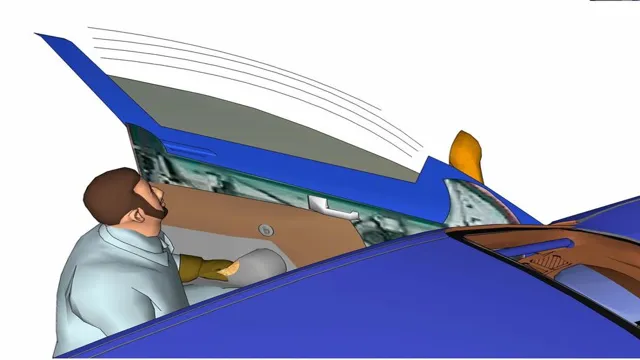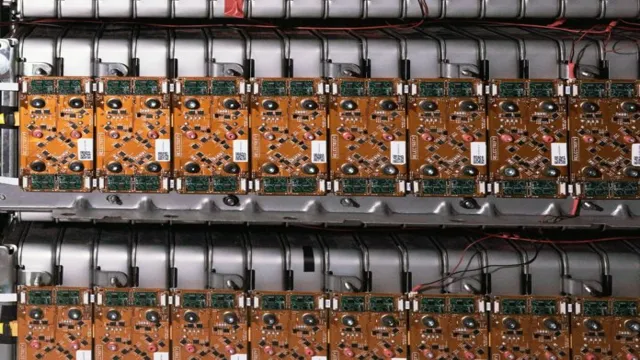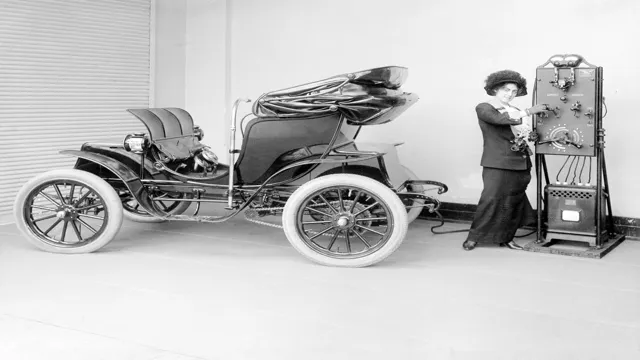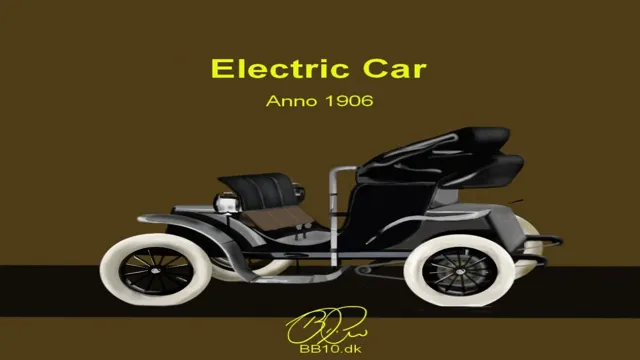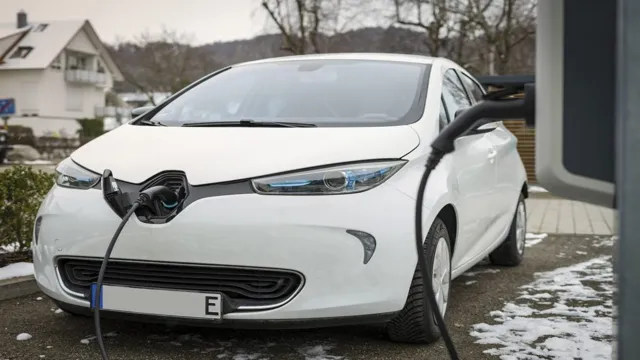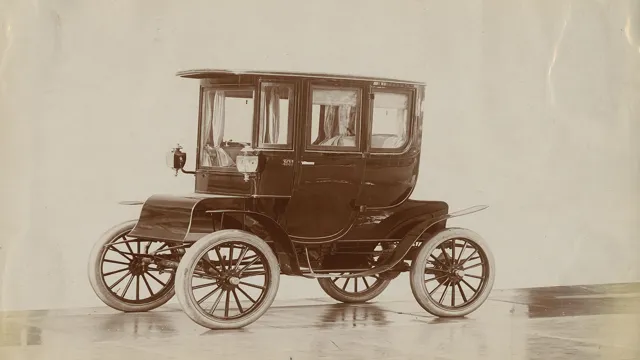The Evolution of Car Windows: From Hand-Cranked to Electric – A Fascinating History!
Have you ever stopped to think about the electric windows in your car? It’s something many of us take for granted, but the technology behind these handy features has a long and fascinating history. From hand-cranked windows to modern automatic controls, the evolution of car windows is a testament to the ingenuity and innovation of humanity. In this blog, we’ll take a quick journey through time to explore the development of electric car windows and how they’ve transformed the driving experience.
So, buckle up and join us for a brief history of electric car windows!
Early Days of Power Windows
Electric car window history is an intriguing topic that spans several decades. Early versions of power windows were first seen in the 1940s, but they did not become widespread until the 1960s and 1970s. These early power windows were operated by a motor that was connected to a switch in the door panel.
They were a luxury option that was only available on high-end vehicles. However, as technology advanced, power windows became more affordable and accessible to the average consumer. In the 1990s, fully automated power windows were introduced, which allowed for one-touch operation and obstruction detection.
Today, electric windows are standard on most vehicles and are an essential convenience for many drivers. Looking back at the history of electric car windows, it’s remarkable to see how far the technology has come and how it has evolved to become a standard feature in the modern automobile.
1920s-1950s: The Invention of Power Windows
The early days of power windows date back to the 1920s, when Cadillac introduced the first hydraulic power windows on their luxury vehicles. This innovation was a game-changer, as car owners could now easily control their windows with the push of a button rather than having to manually crank them up and down. However, hydraulic power windows were a complex and expensive system, limiting their availability to only high-end vehicles.
It wasn’t until the 1950s that power windows became more widespread, thanks in part to the development of the more affordable electric motor system that we know today. While power windows are now commonplace in new cars, it’s fascinating to think about the early days of this technology and how it evolved over time to become an essential feature in modern vehicles.
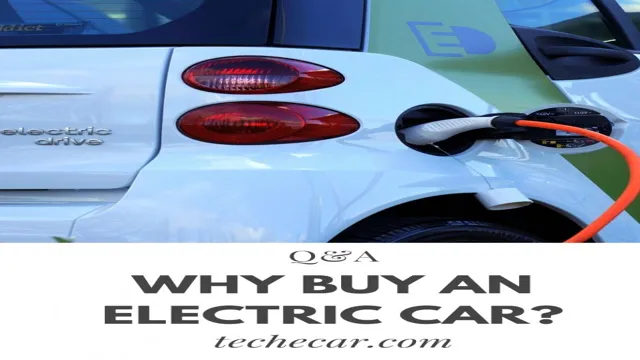
1960s-1970s: Electric Windows Become Standard
In the early days of automotive history, it was common for car windows to be manually operated by the passengers. However, this all changed in the 1960s and 1970s when electric windows became standard in many car models. It was a time of great change in the automotive industry, with manufacturers embracing new technologies to enhance the driving experience.
Electric windows not only made it easier for passengers to operate the windows, but they also improved safety by allowing the driver to control all windows from the driver’s seat. The rise of power windows during this period was a significant development in automotive history and has remained a standard feature in cars to this day.
Developments in Electric Car Windows
Electric car window history is an interesting one. In the early days of electric cars, side windows were manually operated, which was quite inconvenient. Then, in the 1930s, power windows were introduced in luxury cars.
However, it was not until the 1950s that power windows became more widely adopted. Today, electric car windows have seen significant advancements with the integration of smart technology. Some of the latest developments in electric car windows include automatic rain-sensing wipers that trigger the windows to shut and open accordingly, and UV-blocking glass to protect passengers from harmful sun rays.
Additionally, some luxury electric cars now feature panoramic sunroofs that provide a seamless view of the sky. Furthermore, windows that can change from transparent to opaque with the press of a button have entered the market, improving privacy and temperature control inside the vehicle. It is astonishing how technology has improved the durability and functionality of electric car windows.
As electric vehicles become more popular, we can expect continued advancements in this field to enhance the driving experience further.
1980s-1990s: Advances in Technology and Safety Features
During the 1980s-1990s, advances in technology and safety features revolutionized the automotive industry. Electric windows were one such development. Power windows eliminated the need for manual cranks, making it easier and more convenient to roll down or roll up car windows.
This feature proved to be especially beneficial for drivers with physical disabilities or mobility issues. Moreover, electric windows became integrated with safety features, such as automatic sensors that prevent windows from rolling up if they detect obstructions, such as fingers or objects. The modern power windows provided much needed practicality, safety, and convenience to car owners, and they remain a standard feature in most modern vehicles.
Electric windows set the stage for further technological developments in the automobile industry, demonstrating the importance and value of innovation that prioritizes the needs of users.
2000s-Present: Growing Popularity and New Innovations
Electric Car Windows The advancements in electric cars have led to significant developments in electric car windows. Earlier, electric car windows were mainly powered by simple motors that enabled them to raise or lower. But modern electric cars have more sophisticated windows that come with various features like auto-up and down modes, touch sensors, and even auto-dimming technology to reduce glare.
The latest electric windows have also incorporated photovoltaic cells that help charge the car’s battery, thereby enhancing the car’s energy efficiency. With the continuing focus on sustainability, electric car windows will most likely continue to go through more exciting advancements in the future. As new innovations come up, the energy efficiency and performance of electric car windows will significantly improve, making them even more attractive to drivers and environmentally conscious consumers.
Cost and Environmental Benefits of Electric Car Windows
Electric car windows are rapidly gaining popularity due to their many cost and environmental benefits. Recent developments in this technology have made it possible for car manufacturers to produce vehicles with highly energy-efficient electric windows that not only reduce greenhouse gas emissions but also save drivers money on fuel costs. In addition, these electric car windows are more durable than traditional windows, which means they last longer and require less maintenance.
This is good news for both car owners and the environment, as it reduces waste and conserves resources. Moreover, electric car windows help improve the overall aerodynamics of the vehicle, enabling it to move more efficiently through the air and use less energy. As more car manufacturers invest in electric car window technology, we can expect to see even greater cost and environmental benefits in the future.
The Future of Electric Car Windows
Looking back at the history of electric car windows, it’s fascinating to see how far we’ve come in terms of technology. Electric windows first appeared in cars in the 1940s, but they were not widely adopted until the 1950s and 1960s. Initially, they were seen as a luxury item, but with time, they became a standard feature.
Nowadays, electric windows are so commonplace that we take them for granted. However, their evolution is far from over. The next step in the development of electric car windows is to make them even smarter.
Imagine windows that can change their tint based on the weather or time of day, or windows that can be controlled by voice commands. These are just a few examples of what the future of electric car windows may hold. With electric vehicles becoming more common, innovations in electric window technology are sure to follow.
Upcoming Innovations in Electric Car Window Technology
Electric car window technology is constantly evolving, and there are several upcoming innovations that are set to revolutionize the way we interact with our car windows. One of the most exciting developments is the integration of touch and gesture control technology, which will allow drivers to control their windows without the need for physical buttons or switches. This will provide a more intuitive and user-friendly experience, while also reducing clutter on the dashboard.
Additionally, there are plans to incorporate smart glass technology, which will allow windows to switch between transparent and opaque at the touch of a button. This will provide increased privacy and security, while also reducing glare and improving energy efficiency. Overall, these innovations are set to make electric car windows more intuitive, user-friendly, and versatile than ever before, promising a bright future for the electric car industry.
The Role of Electric Cars in the Changing Automotive Industry
The automotive industry is currently undergoing significant changes, and electric cars are playing an essential role in this transition. As more consumers embrace the benefits of electric vehicles, manufacturers are looking for ways to improve these cars’ overall features, including their windows. In the future, electric car windows may become more advanced, offering various functionalities that enhance a driver’s experience.
These could include self-tinting windows, built-in displays, and augmented reality features that offer an immersive experience while driving. With advancements in technology, the potential for electric car windows to become more than just a barrier between the driver and the outside world is growing. As a result, we can expect to see significant developments in this area in the years to come.
The future of electric car windows looks fascinating, and it will be exciting to see what innovative solutions manufacturers will come up with to ensure that these windows keep up with the demands of the modern driver.
Conclusion: The Power of Electric Car Windows
After years of putting up with hand-cranked windows that left our arms tired and our spirits low, the electric car window ushered in a new era of convenience and comfort. No longer did we have to break a sweat just to let a little fresh air into the car or have a conversation with a neighbor at a stoplight. And with advancements in technology, we can now easily control our windows with the flick of a button or the wave of a hand.
So let’s all raise a power window in celebration of this simple yet revolutionary invention that made our motoring lives just a little bit easier.”
FAQs
When was the first electric car with power windows invented?
The first electric car with power windows was invented in 1940.
What was the first electric car with power windows called?
The first electric car with power windows was the Packard Electric Coupe.
When did electric car windows become common in cars?
Electric car windows became common in cars in the 1960s.
How do electric car windows work?
Electric car windows work by using an electric motor to lower and raise the window glass.
Are electric car windows more expensive to repair than manual car windows?
Yes, electric car windows are generally more expensive to repair than manual car windows due to the complex electrical components.
